Depending on your location in the United States, you may see more or fewer birds during the winter months. Many of our flying friends move to warmer locations when the weather gets chilly, while some stay put right where they are and adjust their diet accordingly. Check out this list of the 20 most common backyard winter birds and discover which ones hang out near feeders.
Northern Cardinal
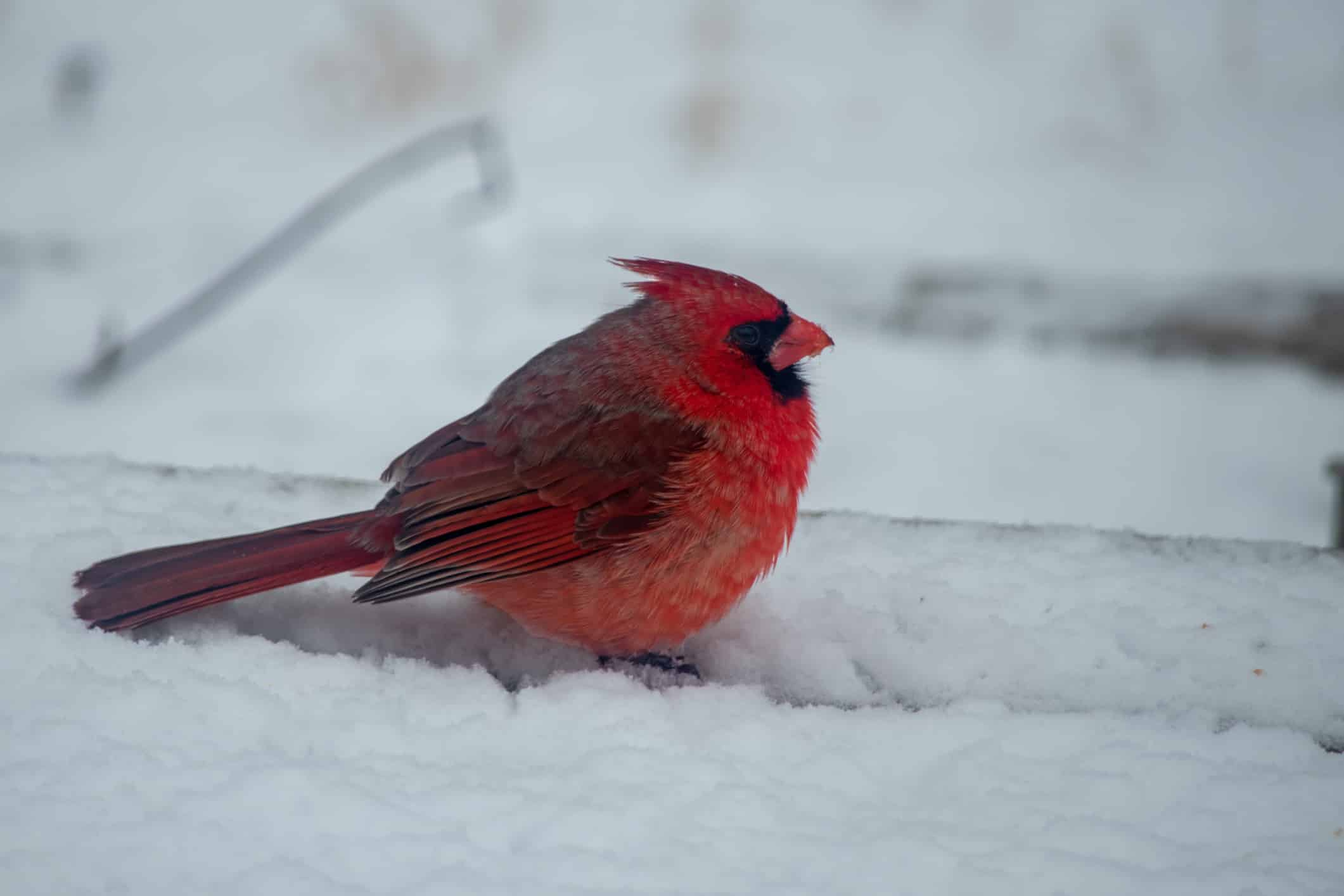
Northern cardinals are popular backyard visitors during early mornings and late evenings.
©iStock.com/Diane079F
The northern cardinal doesn’t migrate or molt during winter, so it remains one of the brightest backyard birds even during the cold months. These birds are popular backyard visitors during early mornings and late evenings. They enjoy large seeds, cracked corn, berries, and small chunks of suet. While peak singing is during the spring, males sing every season.
Blue Jay

The blue jay is another colorful bird that offers a pop of color during the drab of winter.
©Matthew Jolley/Shutterstock.com
While blue jays are known to migrate, many stay present in their environments during winter. They seek out dense vegetation at night to keep warm and protect them from the elements. The blue jay is another colorful bird that offers a pop of color during the drab of winter. In winter, blue jays shift to eating fruits, nuts, and seeds.
Black-capped Chickadee
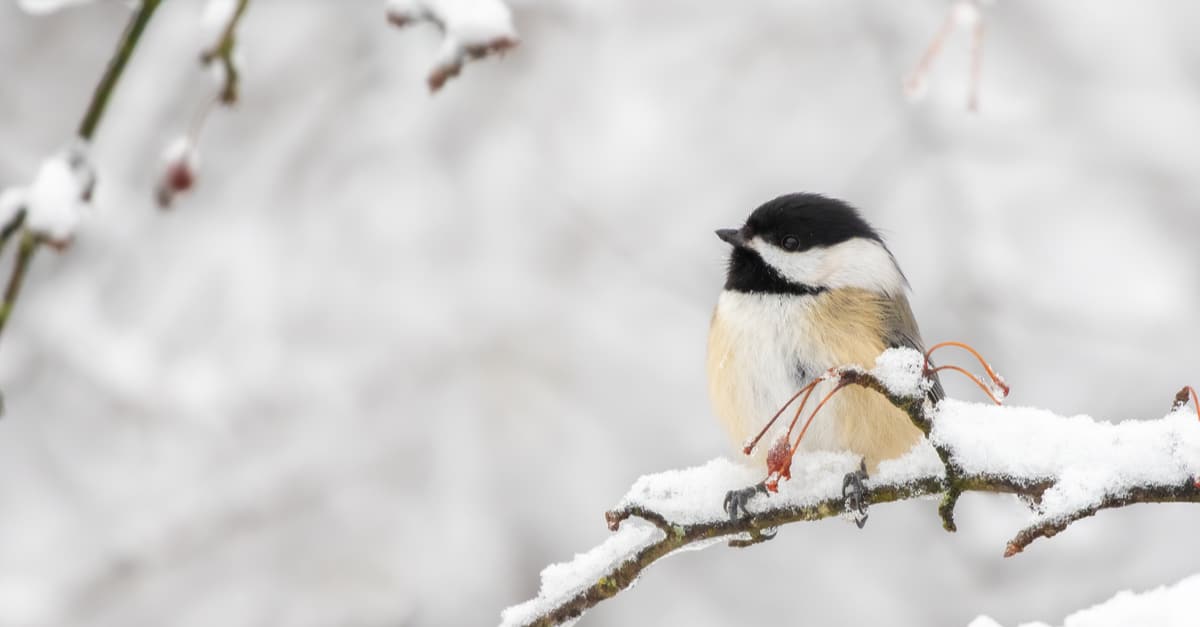
They slip into a state of controlled hypothermia when the temperatures drop
©Mr.Coffee/Shutterstock.com
The black-capped chickadee is an impressive bird. While they only weigh half an ounce, they can maintain a body temperature of 100 degrees during the dead of winter. They slip into a state of controlled hypothermia when the temperatures drop and emerge during the mornings to rewarm themselves. During the winter, these birds eat insects, seeds, berries, and small fruits.
Red-Breasted Nuthatch
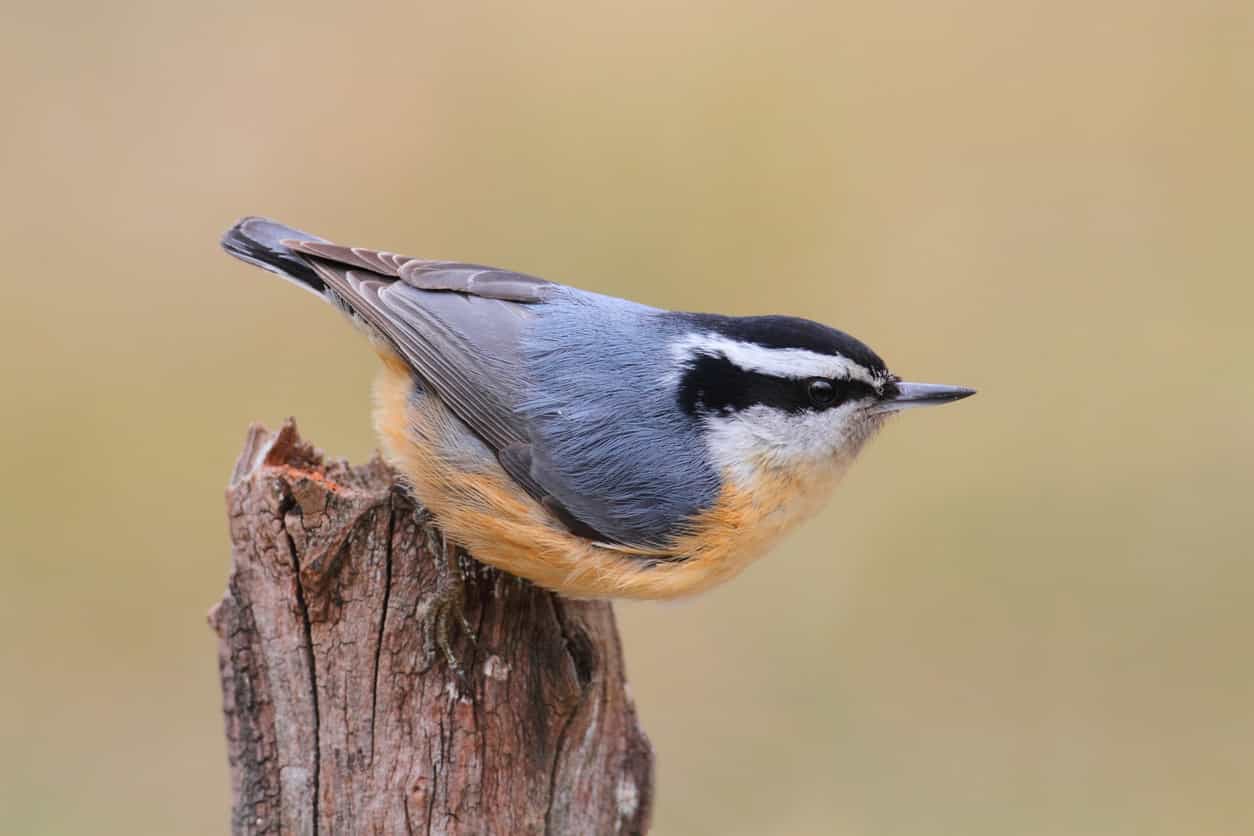
Red-breasted nuthatches primarily eat conifer seeds during the winter
©iStock.com/SteveByland
The red-breasted nuthatch breeds in northern mountains and only migrates during winter when cone production in boreal forests is poor. Some move as far south as the Gulf Coast. Their winter diet consists primarily of conifer seeds, but they will also consume other seeds and insects.
Red-Bellied Woodpecker
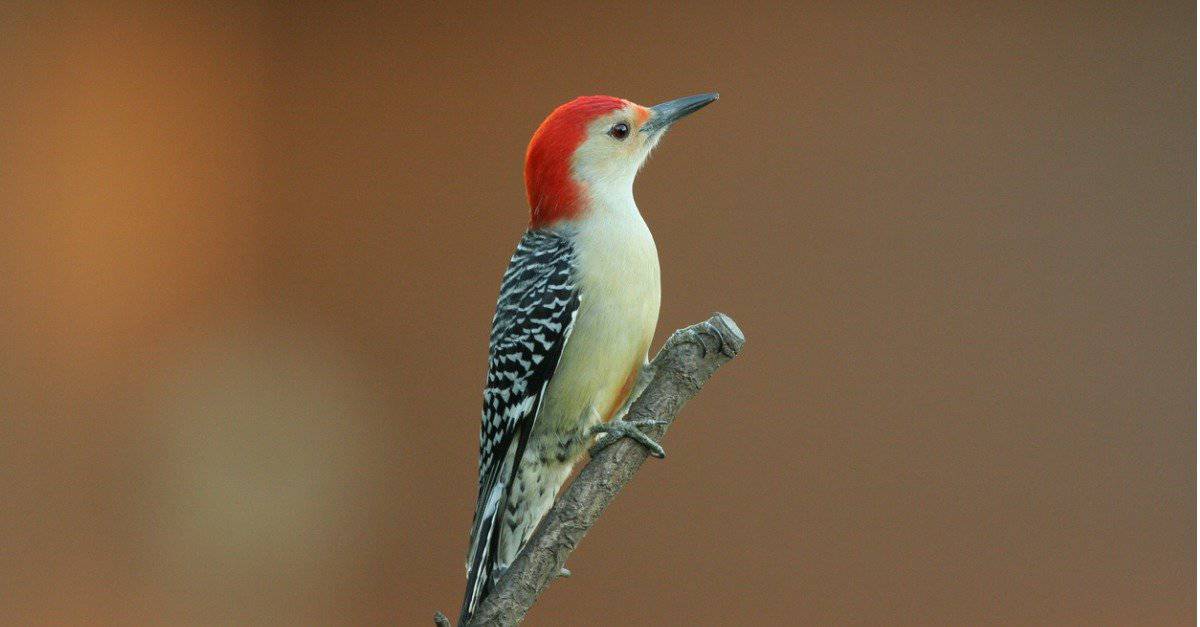
During the winter, red-bellied woodpeckers consume lots of seeds
©iStock.com/Flatcoater
The common and abundant, red-bellied woodpecker is typically nonmigratory within its range. However, some may find their way south during winter. During the winter, red-bellied woodpeckers consume lots of seeds and usually find their way to birdfeeders. You can fill your feeders with suet, peanuts, and sunflower seeds.
American Goldfinch
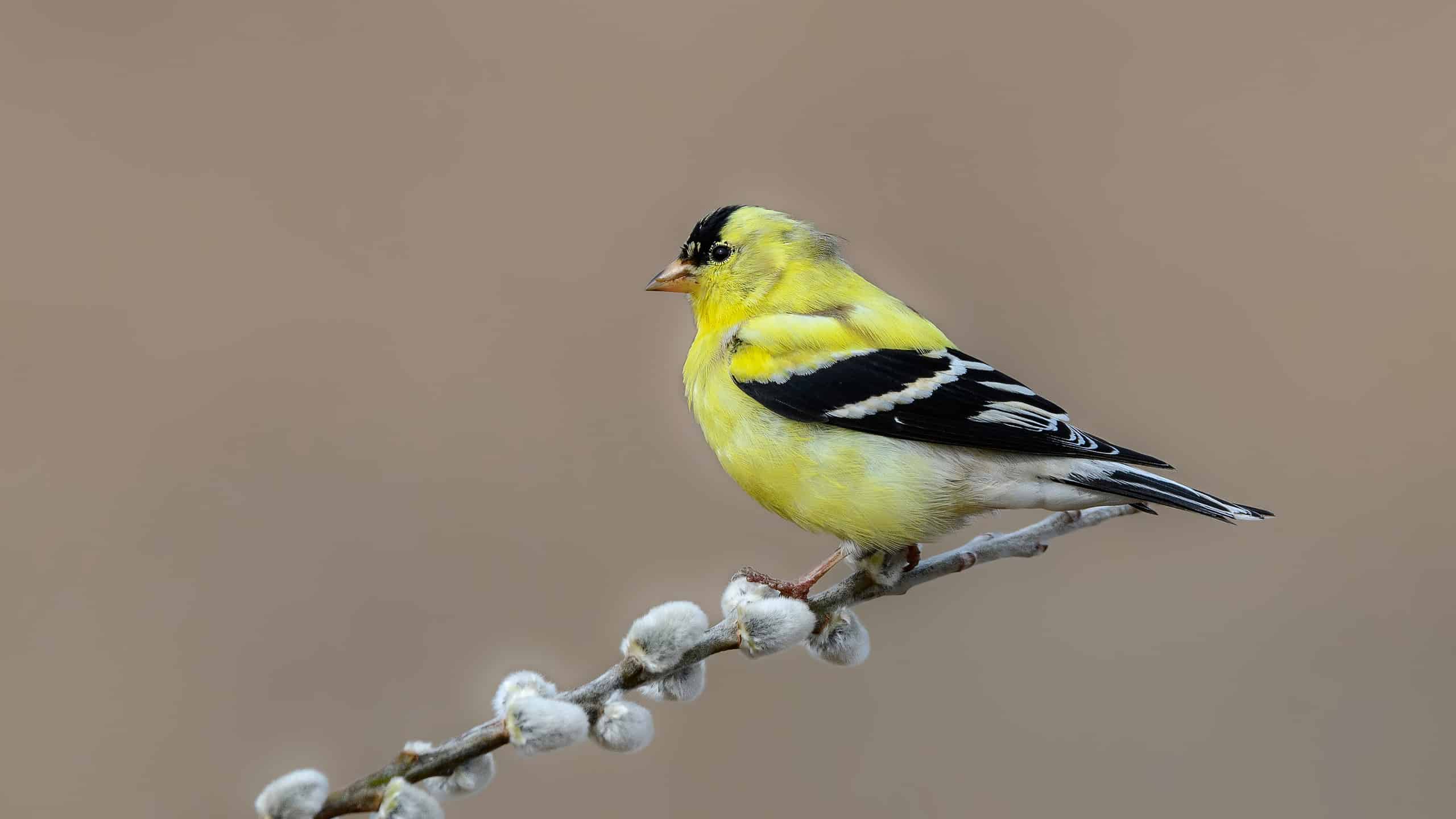
The American goldfinch congregates in weedy fields or near feeders
©FotoRequest/Shutterstock.com
American goldfinches lose their bright yellow plumage during the winter, sporting subtle brown tones instead. They congregate in weedy fields or near feeders, where they spend mornings singing away. They prefer to eat nyger seed at feeders, but will also consume tree buds, sap, and berries.
White-Breasted Nuthatch
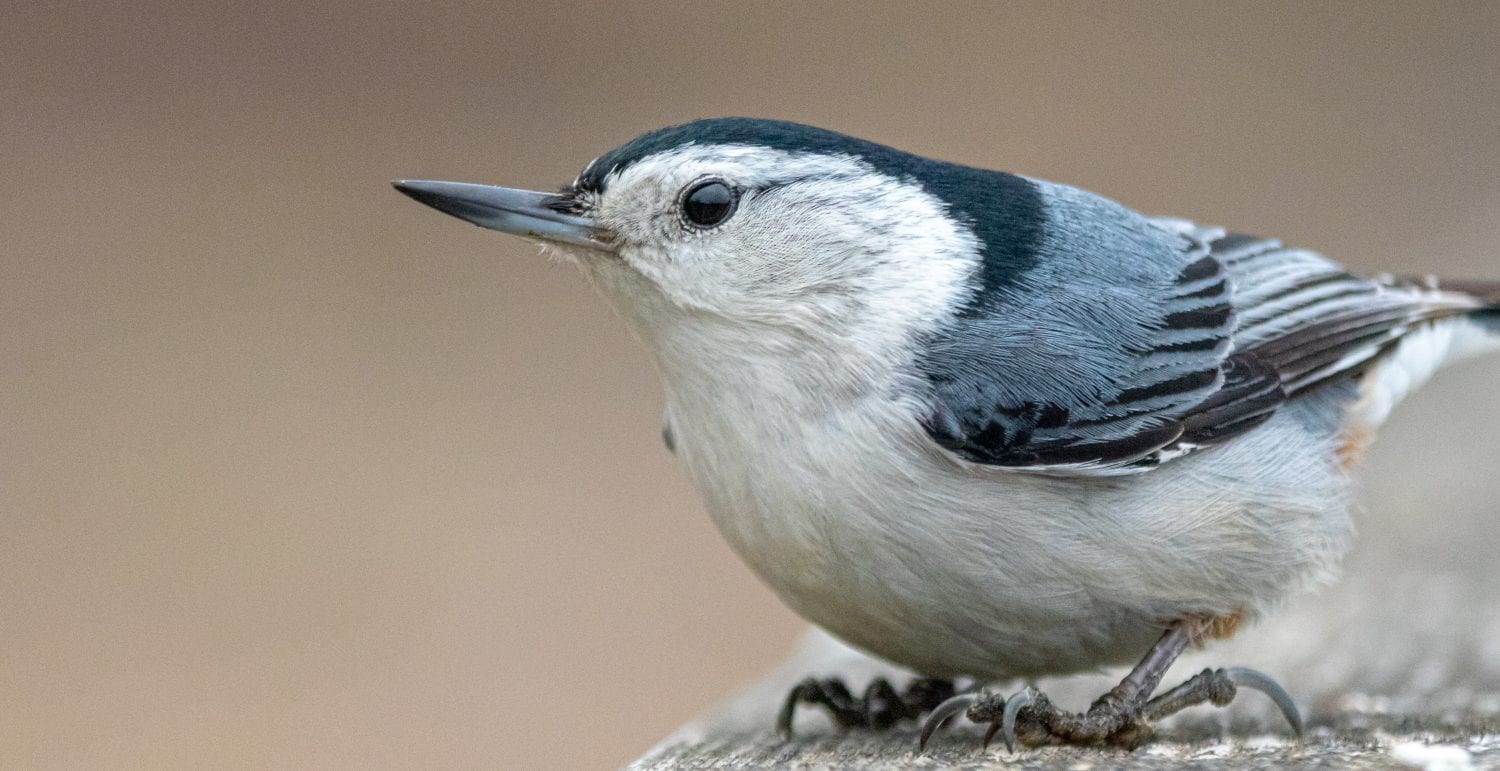
Seeds make up 60% of their winter diet.
©J. A. Mikulich/Shutterstock.com
The white-breasted nuthatch survives winter by staying in mixed flocks and storing away food. These tiny birds sing loud songs even during the coldest months. Seeds make up 60% of their winter diet and they also like to eat suet and peanut butter mixtures at birdfeeders.
Downy Woodpecker
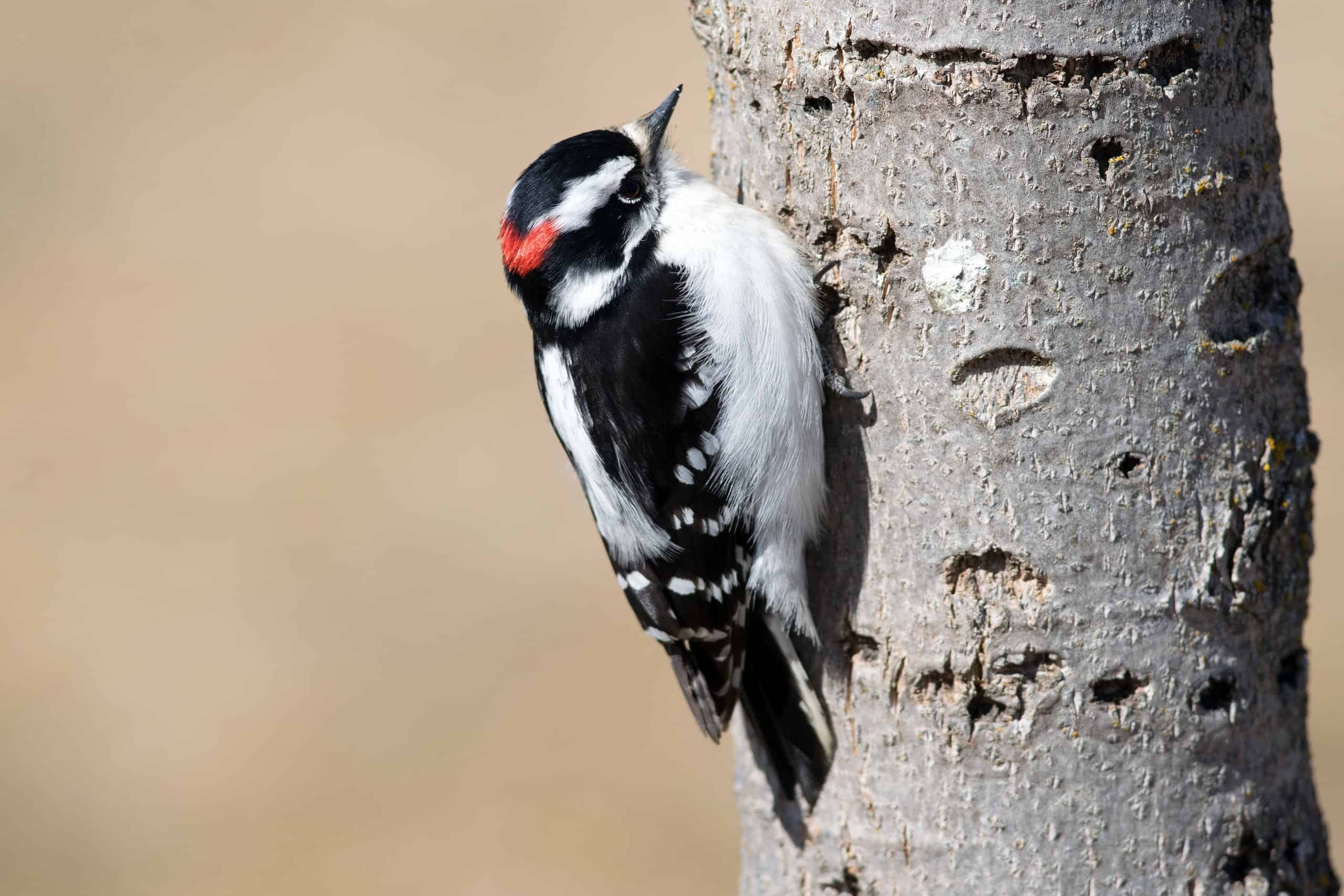
Downy woodpeckers forage for seeds and insects during winter.
©Northernguy/Shutterstock.com
Winter is one of the best times to see the downy woodpecker close-up. These birds move away from their normal spot to forage for seeds and insects, and with fewer leaves, it’s easier to see them! These woodpeckers will eat suet, shelled peanuts, and sunflower seeds at feeders during winter.
Mourning Dove
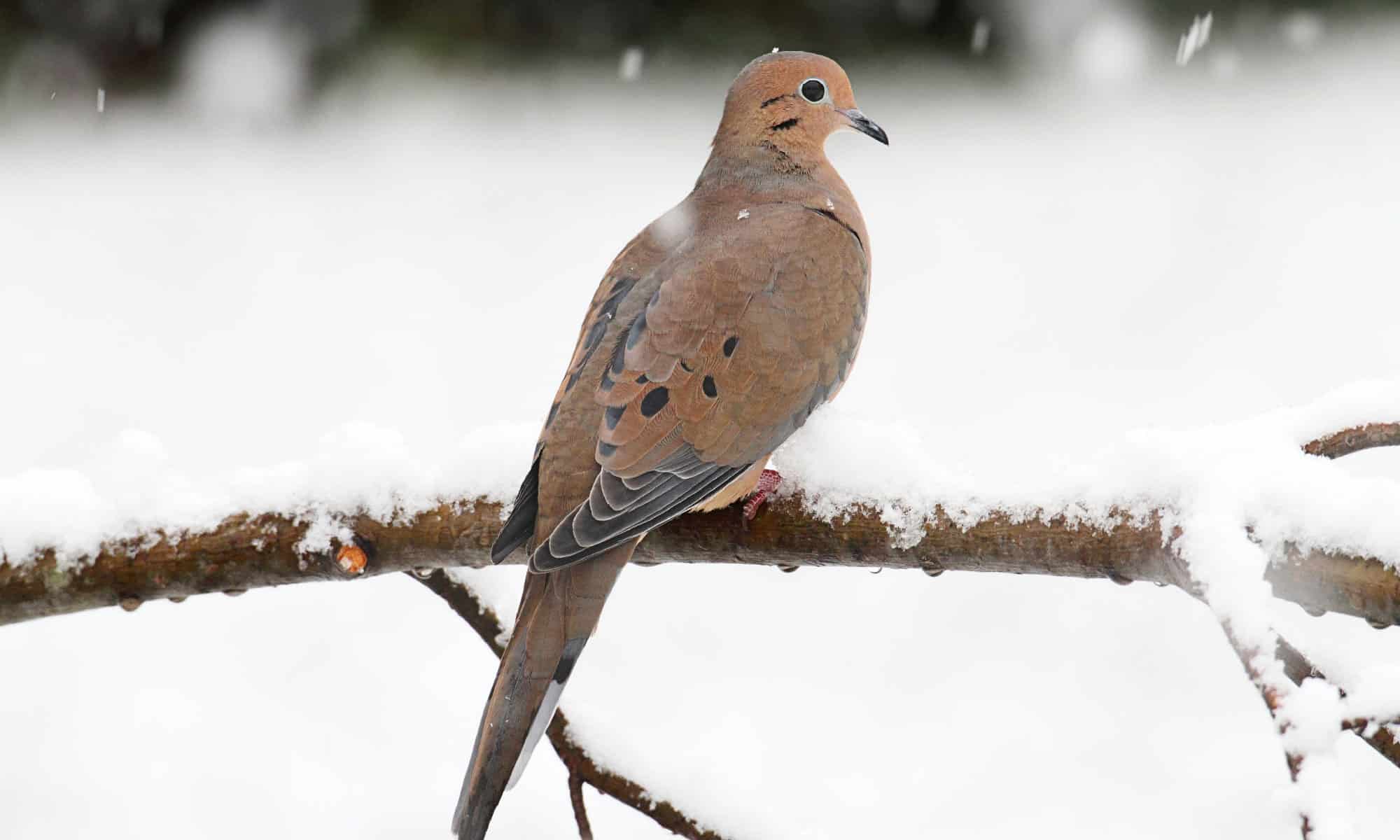
Seeds make up a large portion of the mourning dove’s diet.
©iStock.com/SteveByland
Mourning doves are common at backyard feeders year-round and most remain within their range throughout the winter. Seeds make up a large portion of the mourning dove’s diet. At the feeder, you can put out peanuts, millet, sunflower seeds, nyger seeds, and cracked corn.
Tufted Titmouse
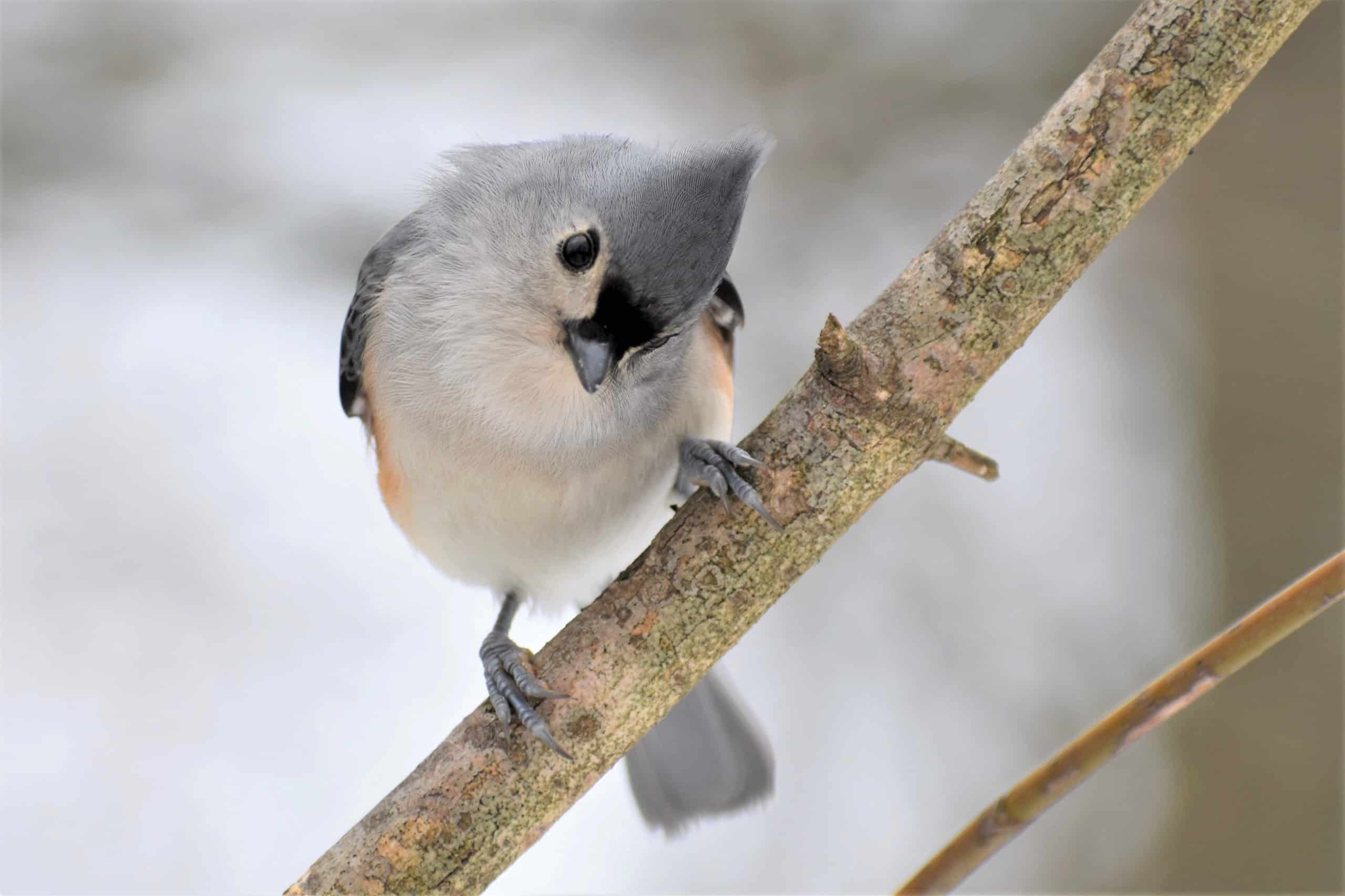
Tufted titmice rely heavily on bird feeders during winter.
©Lester Graham/Shutterstock.com
The tufted titmouse survives harsh winters by hoarding food in the fall and relying on bird feeders during winter. They thoroughly enjoy sunflower seeds, but will also consume peanuts, suet, and other seeds. During the day, they will probe nearby trees for frozen insects and eggs.
Northern Flicker
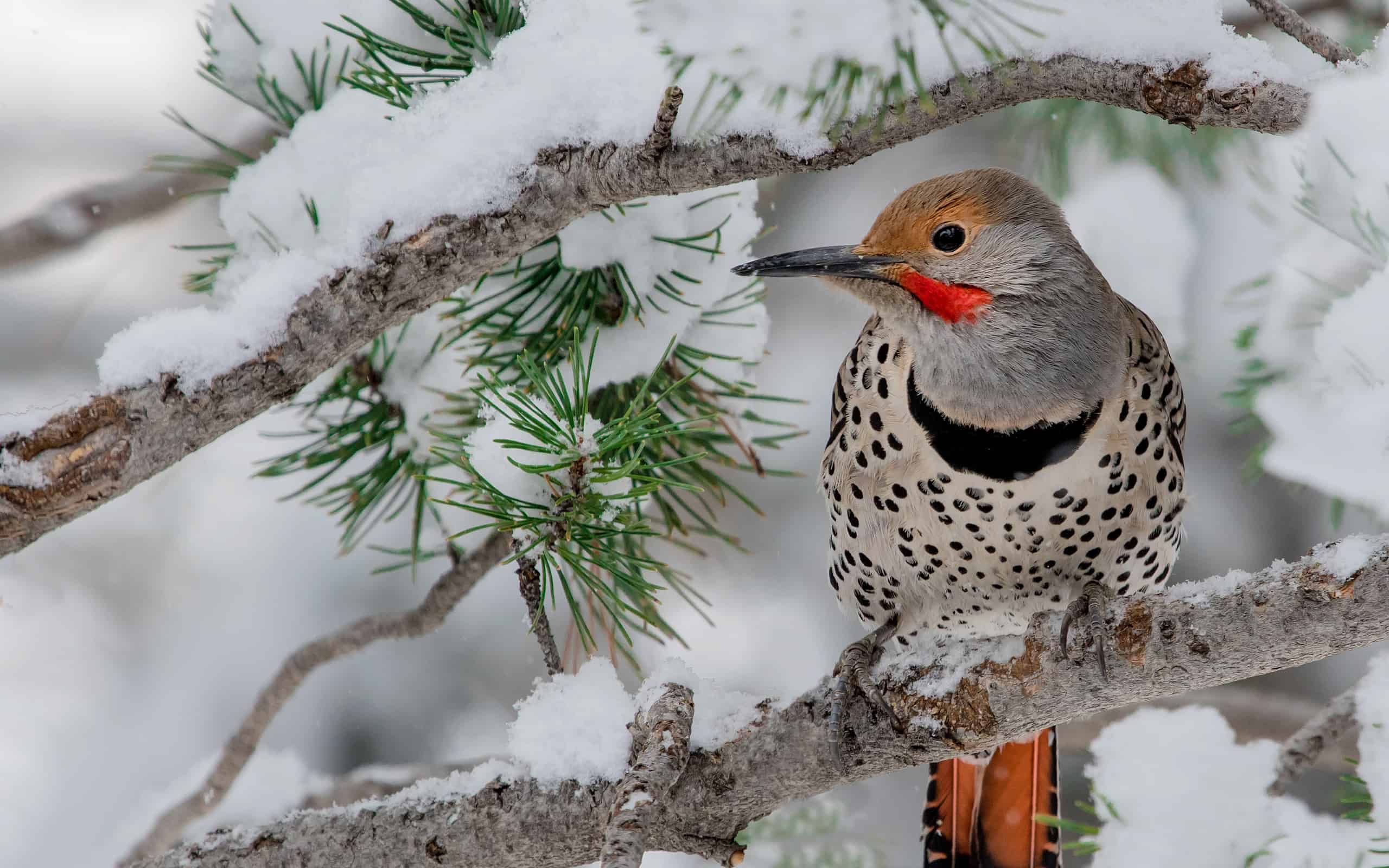
Insects account for most of the flicker’s diet.
©DawnKey/iStock via Getty Images
Northern flickers in the northern regions migrate south for the winter, while those in the southern ranges stay put. Insects account for most of the flicker’s diet. But it will also consume fruits and seeds during the winter. At backyard feeders, they will eat suet, black oil sunflower seeds, shelled nuts, and bark butter.
American Robin
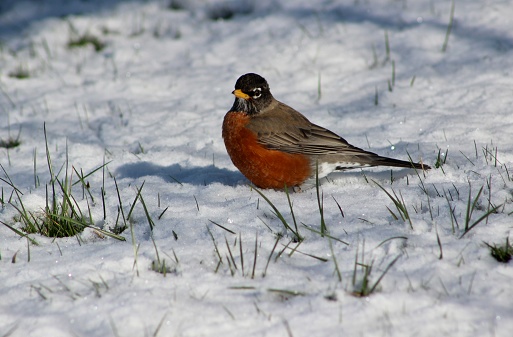
American robins puff out their feathers to keep warm.
©Mel S U/iStock via Getty Images
The American robin is a year-round resident across most of the United States. Their behavior changes during the winter when they join nomadic flocks numbering into the thousands. These birds puff out their many layers of feathers to keep warm. They move around in the winter, looking for berries and other fruits.
Dark-Eyed Junco
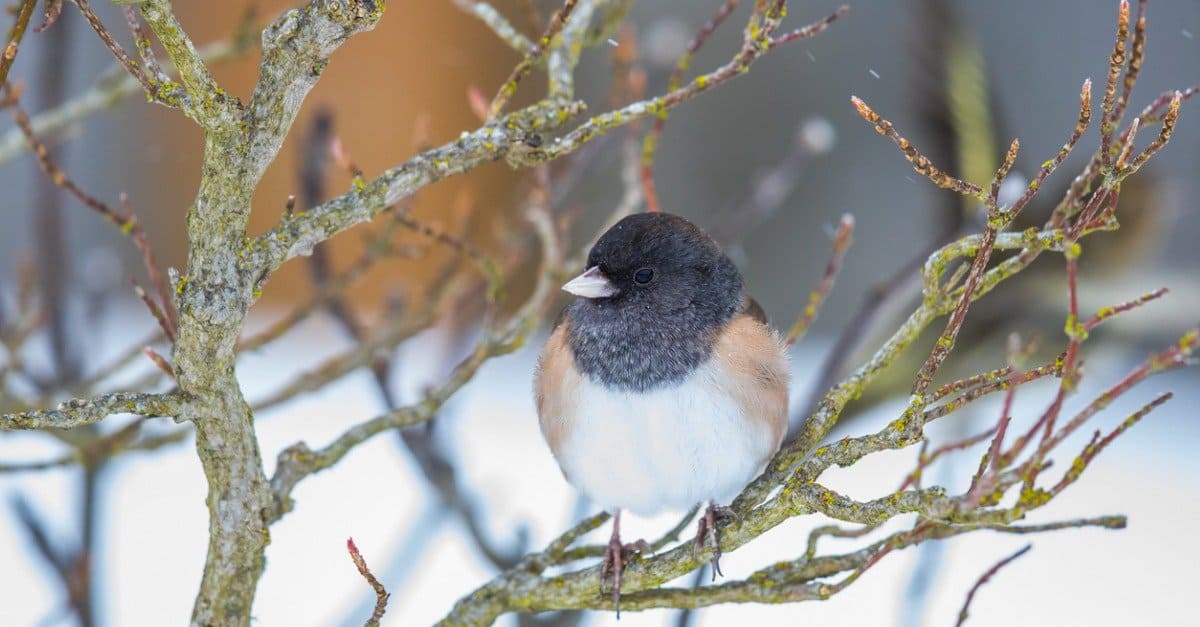
Dark-eyed juncos roost in evergreens.
©iStock.com/Jeff Huth
The dark-eyed junco is one of the most adorable winter birds and you can see them across much of the United States during the cold months. They like to roost in evergreens, tall grasses, and brush piles. These birds rely heavily on weed and grass seeds during winter.
Cedar Waxwing

Cedar waxwings eat fruit almost exclusively.
©Skyler Ewing/Shutterstock.com
These short to long-distance migrants typically spend winters in the Southeastern United States, but you can also find them in the western half of the country. These birds are not common at feeders, as they mainly eat fruits. During winter, they rely heavily on cedar berries. You can offer them small, chopped fruit pieces in a tray feeder.
European Starling

European starlings are short-distance migrants or residents during winter.
©Kristi Blokhin/Shutterstock.com
Winter European starlings look much different from their summer plumage. Against the backdrop of the snow, they show brown and black feathers covered in bright white spots. These birds are short-distance migrants or residents during winter. During the season, these birds eat berries, fruits, and seeds.
Common Grackle

Common grackles forage and roost in enormous communal flocks.
©iStock.com/passion4nature
From late summer through winter, common grackles forage and roost in enormous communal flocks numbering the millions. Populations in warmer regions stay year-round, while those in the north migrate south. These birds consume grains and seeds during the winter.
Cooper’s Hawk
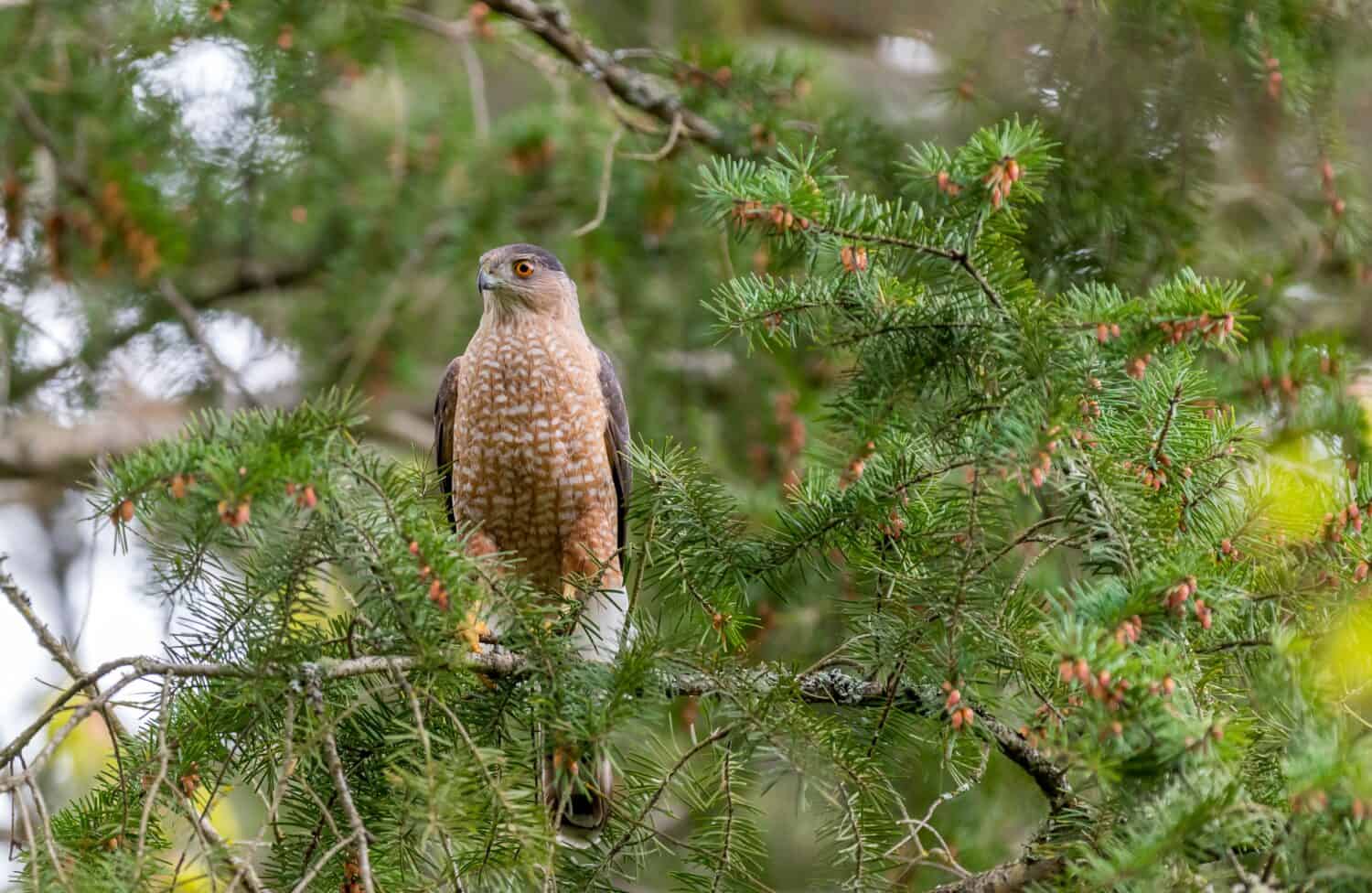
The Cooper’s hawk is a medium-sized bird of prey that feasts on small birds and mammals.
©rhfletcher/Shutterstock.com
These hawks live year-round throughout most of their range, but those in far northern areas will move south in the winter. The Cooper’s hawk is a medium-sized bird of prey that feasts on smaller birds and small mammals, like squirrels, mice, and bats. They like to hunt for winter birds near backyard feeders.
House Finch
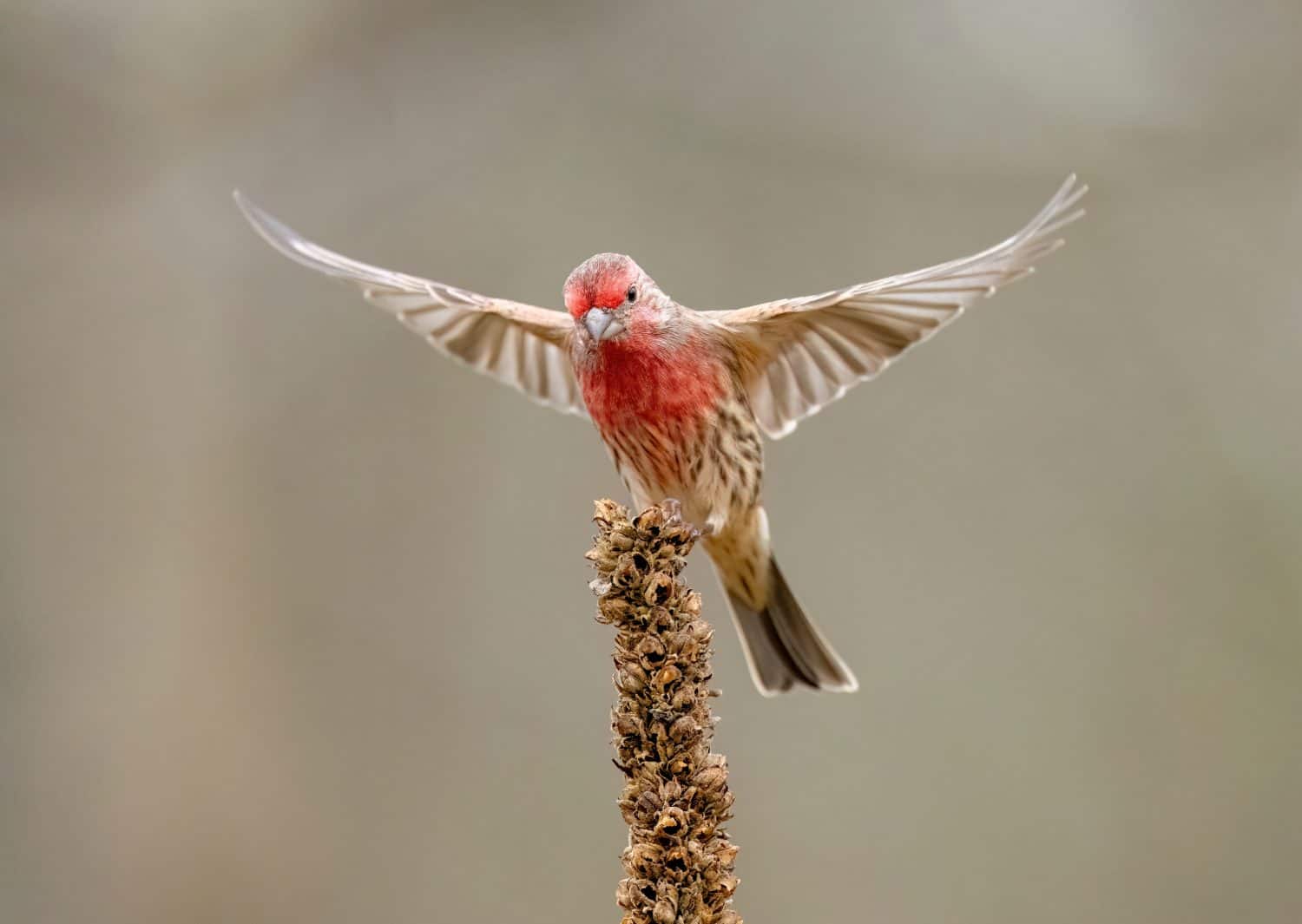
The
house finch
eats seeds, fruits, and buds.
©Jeff Caverly/Shutterstock.com
House finches are resident or short-distance migrants in the United States. During the winter, the house finch eats insects and seeds. You can put out nyger and sunflower seeds for these birds and they will also eat fruits and buds.
Sharp-Shinned Hawk
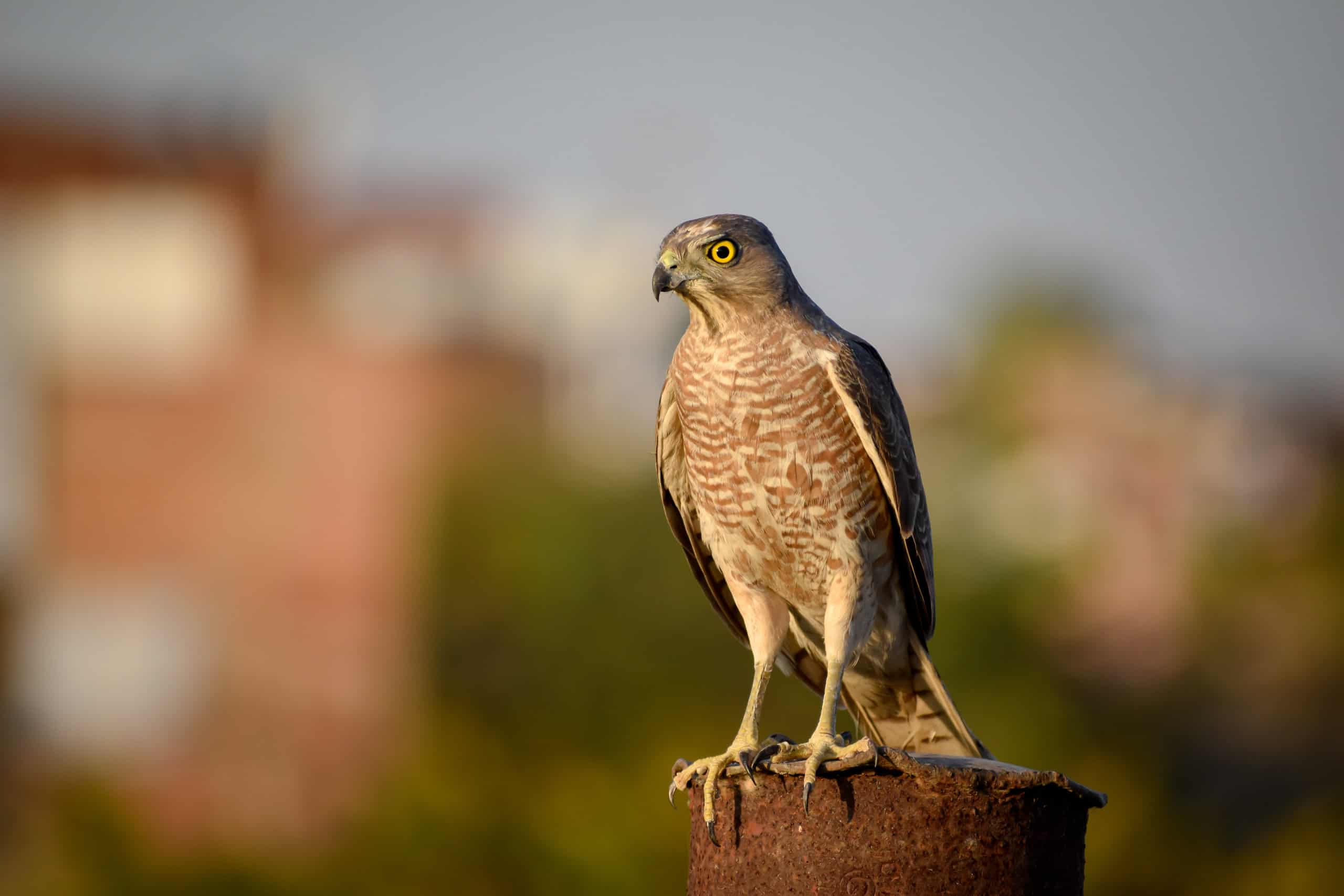
You can find this raptor in forests and brushy areas during the winter.
©Vizz Effect/Shutterstock.com
The sharp-shinned hawk is one of the most migratory hawks in the country, breeding in Canada and wintering as far south as Panama. Across the United States, you can find this raptor in forests and brushy areas during the winter. This bird feeds mainly on small birds, but they will also eat mammals, insects, and reptiles.
Eastern Bluebird
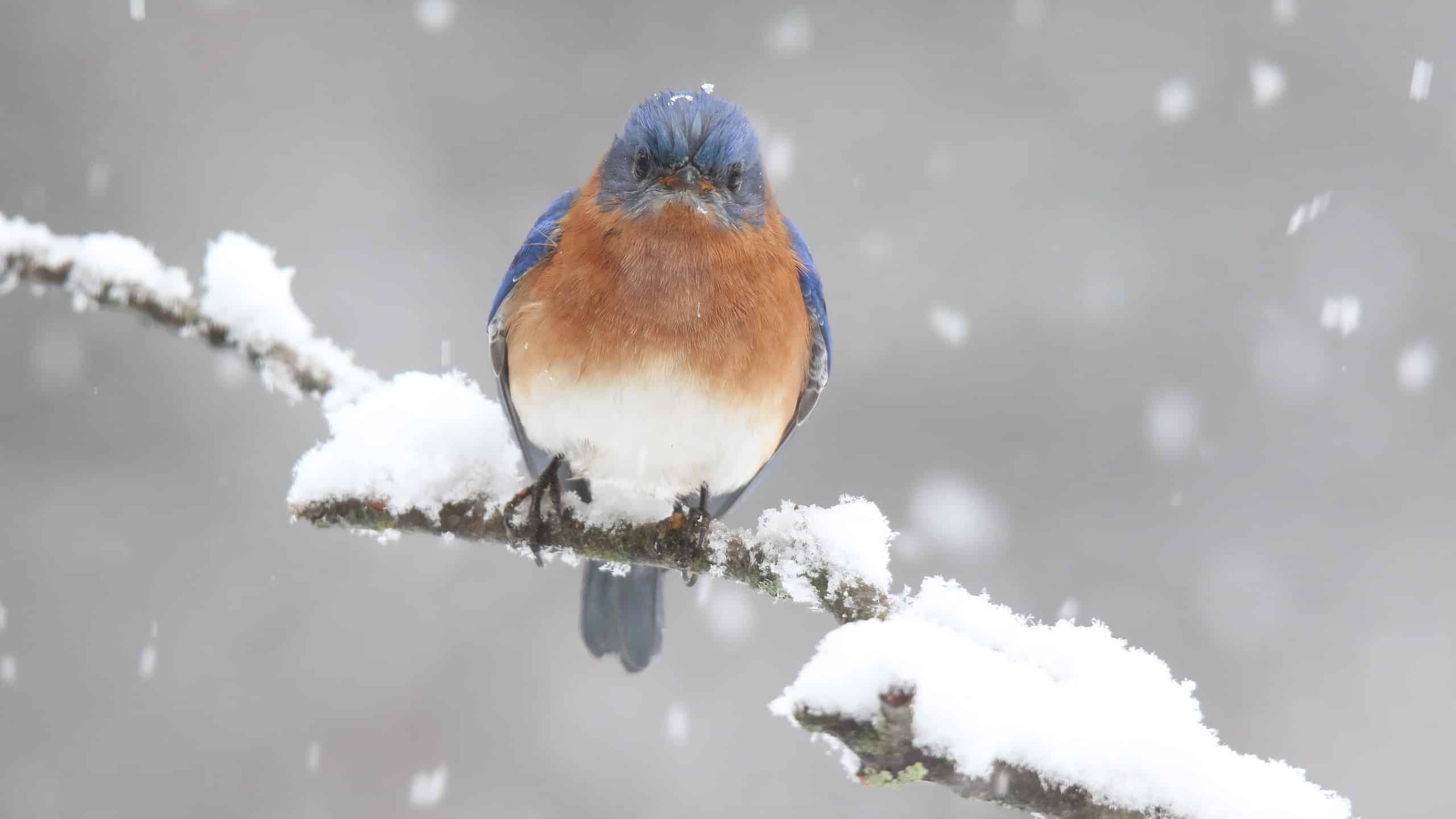
Eastern bluebirds love dogwood berries and other wild fruits.
©iStock.com/suefeldberg
The eastern bluebird moves to the southeastern United States and Mexico during the winter and breeds in Canada and New England. Eastern bluebirds love dogwood berries and other wild fruits. You can provide them with native berries, like mistletoe, holly, and dogwood.
The photo featured at the top of this post is © iStock.com/EEI_Tony
Thank you for reading! Have some feedback for us? Contact the AZ Animals editorial team.






